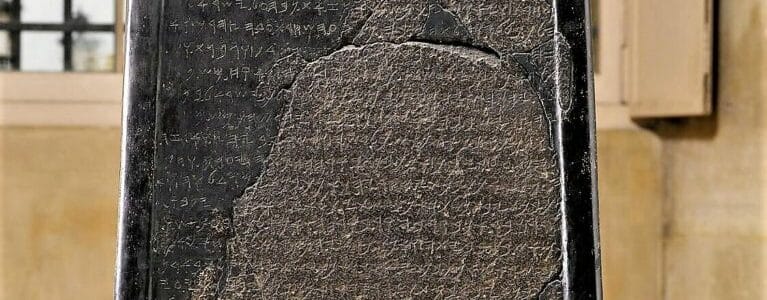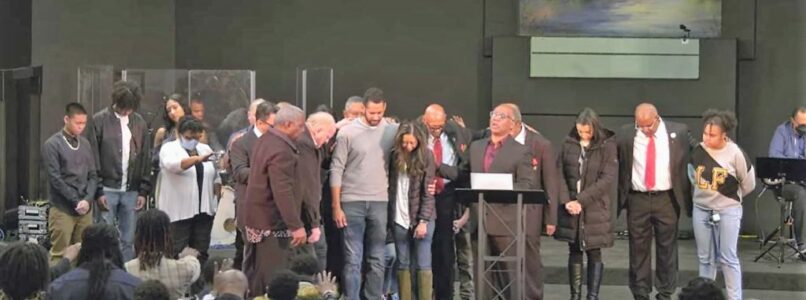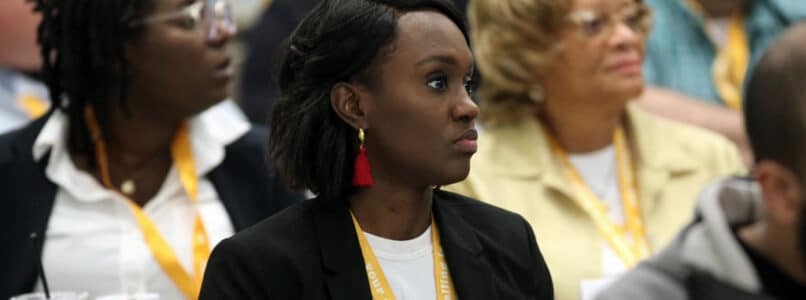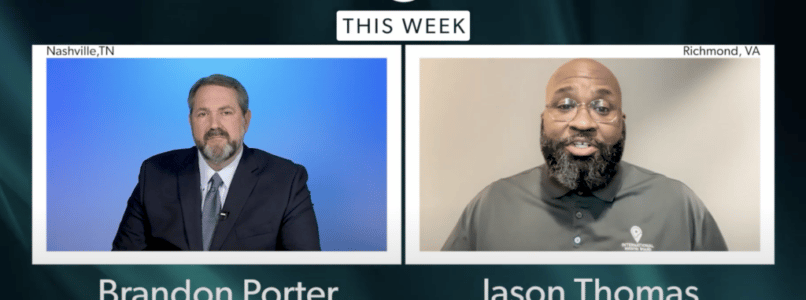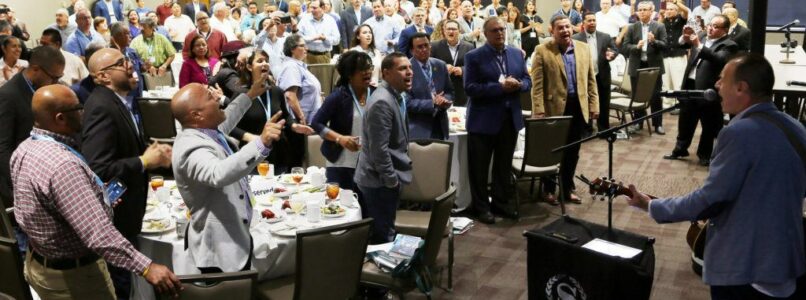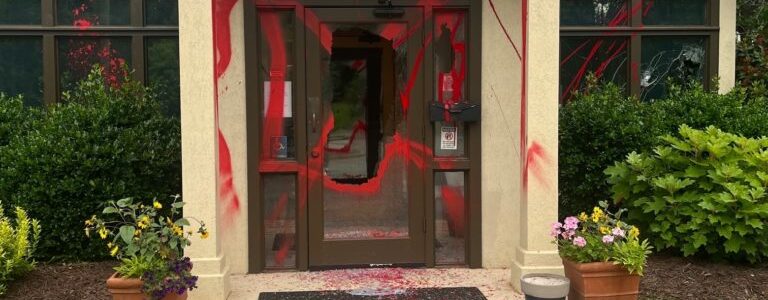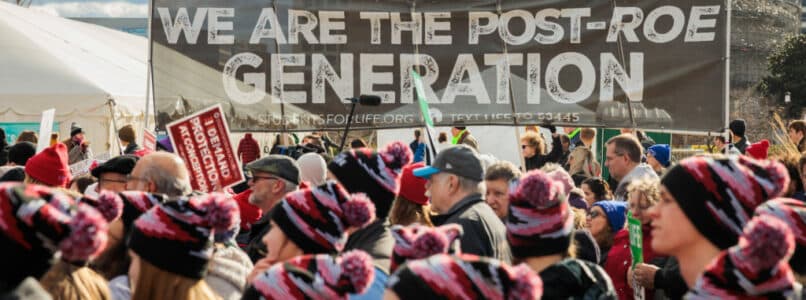WILMORE, Ky. (BP)—Revival fires may be stirring again at a small college in rural Kentucky near Lexington. Services, filled with preaching, singing and personal testimonies, have been ongoing at Asbury University and Theological Seminary since Feb. 8.
According to university accounts, a similar 144-hour revival broke out at the campus in 1970.
Alexandra Presta, a student at Asbury wrote in The Asbury Collegian, the campus newspaper, on Feb. 8, “Peers, professors, local church leaders and seminary students surround me— all of them praying, worshipping, and praising God together. Voices are ringing out. People are bowing at the altar, arms stretched wide.”
She wrote that in the midweek chapel service campus minister Zach Meerkreebs led an invitation for personal confession and testimonies.
“Wednesday chapel speaker Zach Meerkreebs admitted to those in attendance he didn’t know what the call of confession would look like, but this morning he spoke about seeing God not only as a Father but as a friend. Someone who won’t abandon you. Someone who will be there when you need to cry, mourn, rejoice, dance or anything in between,” she wrote in the Asbury Collegian.
Bill Elliff, founding pastor of The Summit Church in North Little Rock, Arkansas, attended a portion of the services on Feb. 10.
“Within the first hour, I had moved from a spectator to a humble participant,” he wrote in a blog on his website.
“There are wise leaders from the University who are helping shepherd the moment. I’m sure they have learned from the past movements how to steward this best,” he wrote.
Elliff has been a student of prayer and spiritual awakening and has written more than 50 books on the subjects.
“In some ways, it is a worship-based, Spirit-led, Scripture-fed prayer gathering. It is just what we should be doing all the time: waiting before God, worshiping Him, praying to Him, listening to Him, responding to Him, and being shepherded by wise leaders who see themselves merely as facilitators of God’s activity,” Elliff wrote.
Elliff said the 1,500-seat Hughes Auditorium was full on Friday night (Feb. 10). Reports indicated it was overflowing on Saturday night (Feb. 11).
Eric Allen, Kentucky Baptist Convention missions team leader, attended a portion of Saturday’s meeting and reported a similar experience.
“Sherry (Allen’s wife) and I had only been there a few minutes singing music when we were both moved emotionally and in tears because the presence of God was so real in that place. We could feel it,” he told Baptist Press.
“There was genuine praise and worship. Everything pointed to God and was very Christ-centered,” he said.
He said that while there was freedom in the meeting, there was also order.
“One of the things I noticed was that there was spontaneity and order to what was happening. It wasn’t a stifling or restricting kind of order because there was also a freedom for people to testify, sing or pray and the freedom was never wild or without order,” he said.
Elliff made similar observations.
“It is not weird. Everything is extremely orderly but vibrant, spontaneous, and powerful,” he wrote.
Graci Bradley, an Eastern Kentucky University (EKU) student from Shelbyville, attended the Friday night service.
“Seeing people from every nation, tribe, and tongue, and from all different generations, was a glimpse of heaven. It was very encouraging to see that everyone was there for one common goal – to give God glory,” she told Baptist Press.
“He is worthy of it all, and in Him we are united,” she said.
Bradley, an active member of the Baptist Campus Ministry at EKU said in written comments, “What is happening at Asbury is something pleasing to God, as His children are uniting to sing His praise.”
That is a similar theme to the 1970 revival at Asbury, where 2,000 witness teams were sent to 130 colleges to share of their experience. On Saturday afternoon, campus ministers hosted a dinner for college campus student leaders to hear of how they might share in a similar event at their campus.
Kenny Rager, church evangelism strategist at the Kentucky Baptist Convention, attended the service on Saturday night.
“I was encouraged to see the staff shepherding the revival movement,” he told Baptist Press. “They are keeping order, giving instructions, and announcements but still encouraging the freedom of the spirit,” he said.
Rager said there were many testimonies shared while he was there, but there were also sermons.
“I was very encouraged that the preaching of God’s Word is happening. Lots of expressive worship and testimonies but there was also good preaching of the Word by the staff,” he said.
He says he understands some people might be skeptical of the events taking place at Asbury.
“I understand why people may be skeptical. I was a little, too. We have seen a lot of movements fizzle out or even drift into heresy,” he said.
“Honestly, time will tell if this bears lasting fruit. But I went. I felt the Lord’s presence. I saw people worship. I saw people praying. I heard the Word preached. I met new brothers and sisters in the Lord and I felt the Lord speak to me about some issues,” he told Baptist Press in written comments.
A hunger for God permeates the people we’ve talked to who have attended.
“People are hungry to see God at work, and I think that’s what draws the crowds. They want to see God do something great in our lives and in our midst,” Allen said.
Bradley added, “…it’s my hope and prayer that it doesn’t stop at Asbury, but that it extends all over – we are called to be sent.”
“I believe these meetings are being driven by a desire to see a fresh outpouring of the spirit,” Rager said. “So many people want to see their churches wake up. Programs, plans, and strategic places can never fill the void of the Holy Spirit,” he said.
Elliff called on other believers to pray for what is happening at Asbury and to pray that God would bring it to their church, campus, and city.
“As I spoke to the hotel receptionist this morning, she told me they were sold out of rooms. ‘We were not prepared for revival,’ she said. May it not be true of us,” he wrote.


